o n t h e r o a d
t o f u l ly
s e l f - d r i v i n g
Waymo Safety Report
�
o u r m i s s i o n
Waymo’s mission is to bring self-driving
technology to the world, making it safe and
easy for people and things to move around.
We believe our technology can improve
mobility by giving people the freedom
to get around, and save thousands
of lives now lost to traffic crashes.
2
�
introduction
We’re Building
a Safer Driver
for Everyone
Self-driving vehicles hold the promise to improve road
safety and offer new mobility options to millions
of people. Whether they’re saving lives or helping
people run errands, commute to work, or drop kids off
at school, fully self-driving vehicles hold enormous
potential to transform people’s lives for the better.
Safety is at the core of Waymo’s mission — it’s why
we were founded over eight years ago as the Google
self-driving car project.
Every year, 1.2 million lives are lost to traffic crashes around the world, and
in the U.S. the number of tragedies is growing. A common element of these
crashes is that 94% involve human error. Driving is not as safe or as easy as
it should be, while distracted driving is on the rise. We believe our technology
could save thousands of lives now lost to traffic crashes every year.
Our commitment to safety is reflected in everything we do, from our company
culture to how we design and test our technology. In this, our first Safety
Report on Waymo’s fully self-driving technology, we detail Waymo’s work
on — and our commitment to — safety. This overview of our safety program
underscores the important lessons learned through the 3.5 million miles
Waymo’s vehicles have self-driven on public roads and through our billions
of miles of simulated driving.
3
Waymo Safety Report On The Road to Fully Self-Driving �
Waymo’s Safety Report also addresses the U.S. Department of Transportation
(DOT) federal policy framework for autonomous vehicles: Automated Driving
Systems 2.0: A Vision for Safety. The DOT framework outlines 12 safety design
elements, and encourages companies testing and deploying self-driving
systems to address each of these areas. Over the course of our Report,
we will outline the processes relevant to each safety design element and
how they underpin the development, testing, and deployment of fully
self-driving vehicles.
Fully self-driving vehicles will succeed in their promise and gain public
acceptance only if they are safe. That’s why Waymo has been investing
in safety and building the processes that give us the confidence that our
self-driving vehicles can serve the public’s need for safer transportation
and better mobility.
4
Waymo Safety Report On The Road to Fully Self-Driving �
table of contents
Areas Addressed by Waymo’s System Safety Program
Safety Processes
Specific Conditions
Data Recording and Post-Crash Behavior
Self-Driving Vehicle Cybersecurity
The Self-Driving System
Object and Event Detection and Response: Our Vehicle Sensors
Our Self-Driving Software
Operational Design Domain: Ensuring Our Vehicles Operate Safely Under
Minimal Risk Condition (Fallback): Ensuring the Vehicle Can Transition to a Safe Stop
1. Our System Safety Program: Safety by Design
2. How Waymo’s Self-Driving Vehicles Work
3. Testing and Validation Methods: Ensuring Our Vehicles Are Capable and Safe
4. Interacting Safely with the Public
5. Conclusion
Appendix: Scenario Types Used for Testing and Validation
Glossary
End Notes
Rider Experience
Accessibility: Unlocking Opportunities for Those Who Cannot Drive Today
Emergencies and Interacting With Law Enforcement and First Responders
Base Vehicle Safety
Self-Driving Hardware Testing
Self-Driving Software Testing
Behavioral Competencies for Normal Driving
Testing the Fully Integrated Self-Driving Vehicle
Testing on Public Roads
Testing Crash Avoidance Capabilities
Hardware Reliability and Durability Testing
Appendix A. Basic Behavioral Competency Testing
Appendix B. Avoidance or Mitigation of Common Crash Scenarios
10
11
12
13
13
14
15
16
17
18
18
20
21
21
22
25
26
26
28
29
30
31
32
33
34
35
36
38
40
42
5
Waymo Safety Report On The Road to Fully Self-Driving �
S A F E T Y
S O C I E T Y
M O B I L I T Y
A N D
Q U A L I T Y
O F L I F E
The World Around Us
94
p e r c e n t
of U.S. crashes involve
human error. [1]
1.2
m i l l i o n
37,461
r o a d d e at h s
deaths worldwide
due to vehicle crashes
in the U.S. in 2016 and
2.4 million injuries
in 2013. [2]
in 2015. [3]
2
o u t o f 3
people will be involved
in a drunk drivingcrash
in their lifetime. [4]
$594
b i l l i o n
in harm from loss of life and
injury each year. [5]
$277
b i l l i o n
in annual economic costs. [6]
$160
b i l l i o n
in gas burned and
time lost each year. [7]
3
m i l l i o n
Americans age 40 and older
are blind or have low vision. [8]
79
p e r c e n t
of seniors age 65 and older
living in car-dependent
communities. [9]
42
h o u r s
wasted in traffic each year
per person. [7]
Self-driving Technology Can Save
Lives and Improve Mobility
At Waymo, we’re designing fully self-driving vehicles that
make it safe and easy for everyone to get around.
Waymo Safety Report
Waymo Safety Report
On The Road to Fully Self-Driving
On The Road to Fully Self-Driving
6
6
6
�
Building the World’s
Most Experienced Driver
Every mile, in every car, is shared with the entire fleet, giving
every Waymo vehicle more experience for the next mile.
4
8
Years Self-Driving in More than 20 U.S. Cities
3.5
2.5
Billion Self-Driven Miles Simulated in 2016
7
7
Generations of Self-Driving VehiclesMillion Real-World Miles on Public Roads�
How Our Self-Driving Vehicle Sees
the World and How it Works
At the most basic level, human drivers need to answer four questions:
“Where am I?” (perceiving the environment around you), “What’s
around me?” (processing that information), “What will happen next?”
(predicting how others in that environment will behave), and “What
should I do?” (making driving decisions based on that information).
Self-driving vehicles need to answer those questions, too.
A Waymo vehicle’s onboard map view of the intersection of W. Middlefield
Road at Rengstorff Avenue, Mountain View, CA.
1. Where Am I?
Before our cars drive in any location, our team builds
our own detailed three-dimensional maps that highlight
information such as road profiles, curbs and sidewalks,
lane markers, crosswalks, traffic lights, stop signs, and
other road features. Rather than rely on GPS, Waymo’s
vehicles cross-reference their pre-built maps with real-
time sensor data to precisely determine their location
on the road.
2. What’s Around Me?
Our sensors and software scan constantly for objects
around the vehicle — pedestrians, cyclists, vehicles,
road work, obstructions — and continuously read traffic
controls, from traffic light color and railroad crossing
gates to temporary stop signs. Our vehicles can see up
to 300 meters away (nearly three football fields) in
every direction.
In this example, our vehicle has detected vehicles (depicted by green
and purple boxes), pedestrians (in yellow), and cyclists (in red) at the
intersection — and a construction zone up ahead.
Waymo Safety Report
On The Road to Fully Self-Driving
8
�
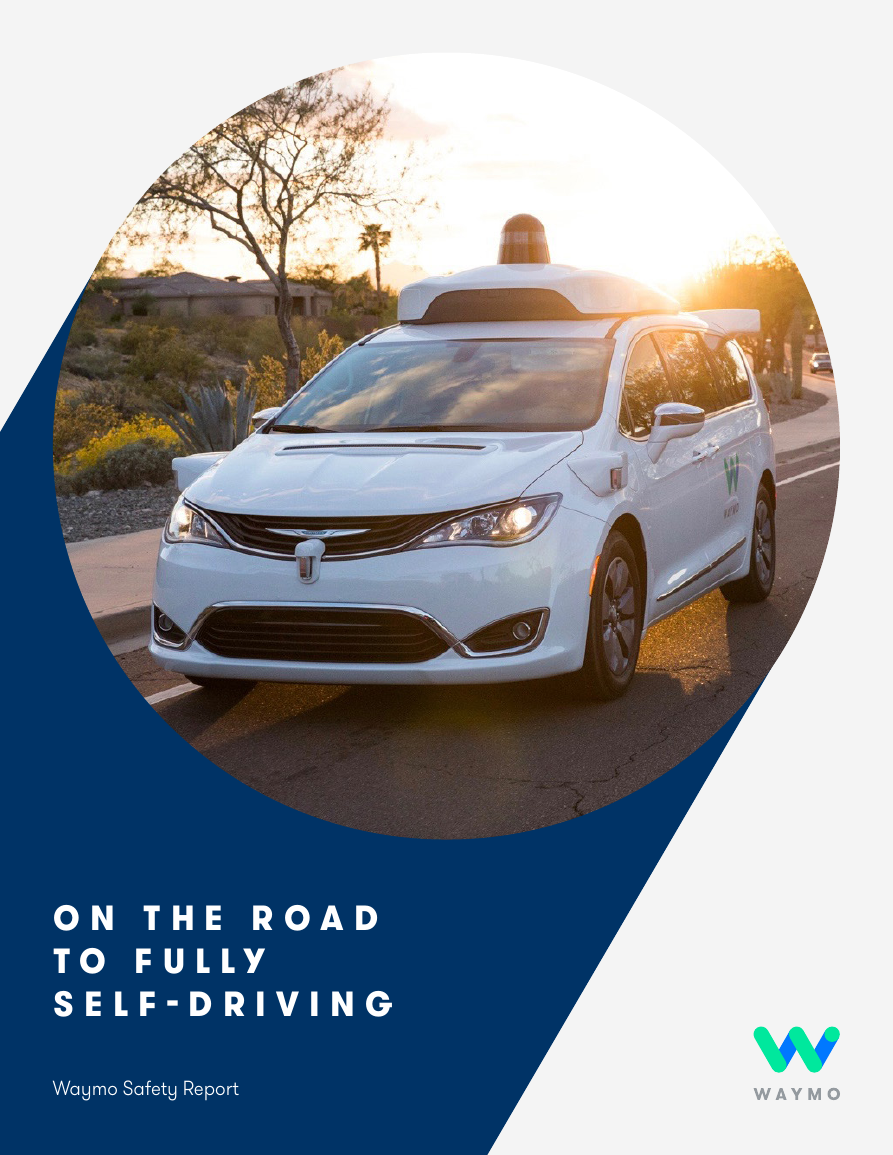
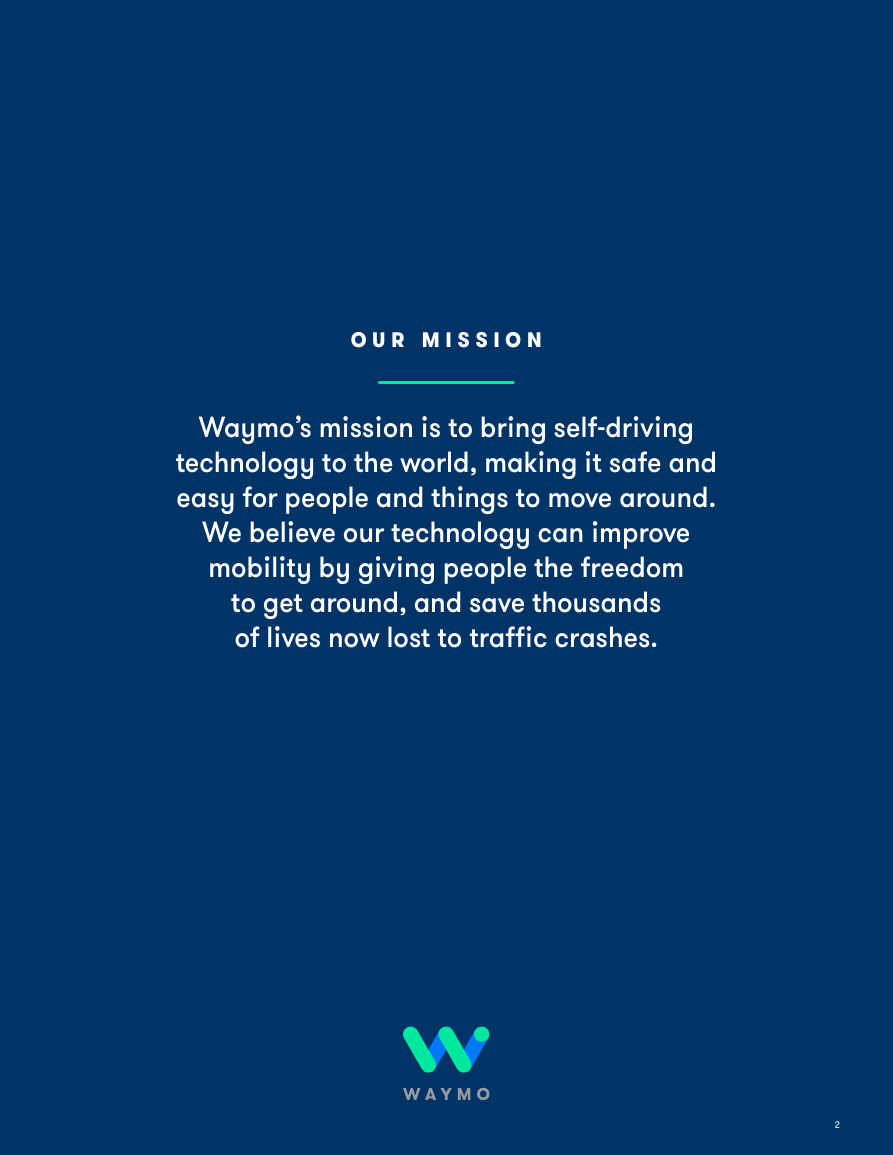
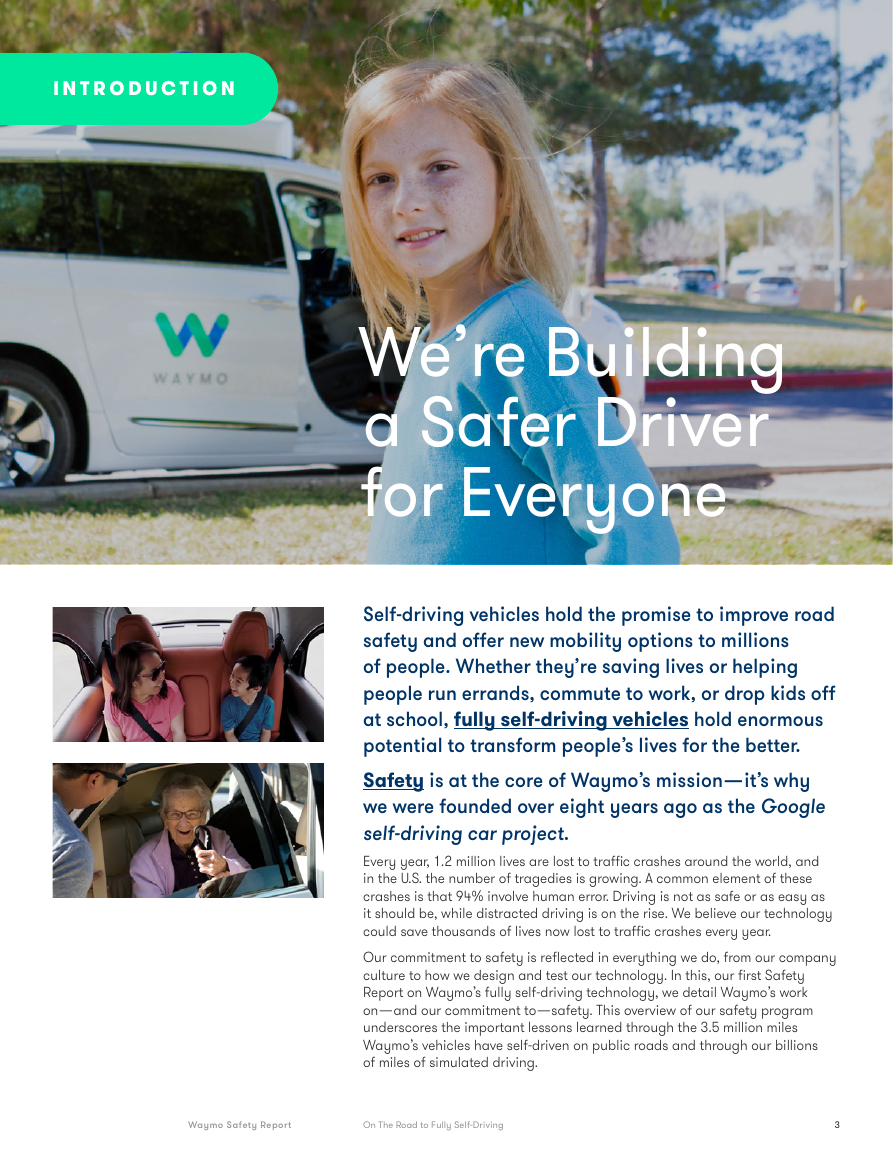

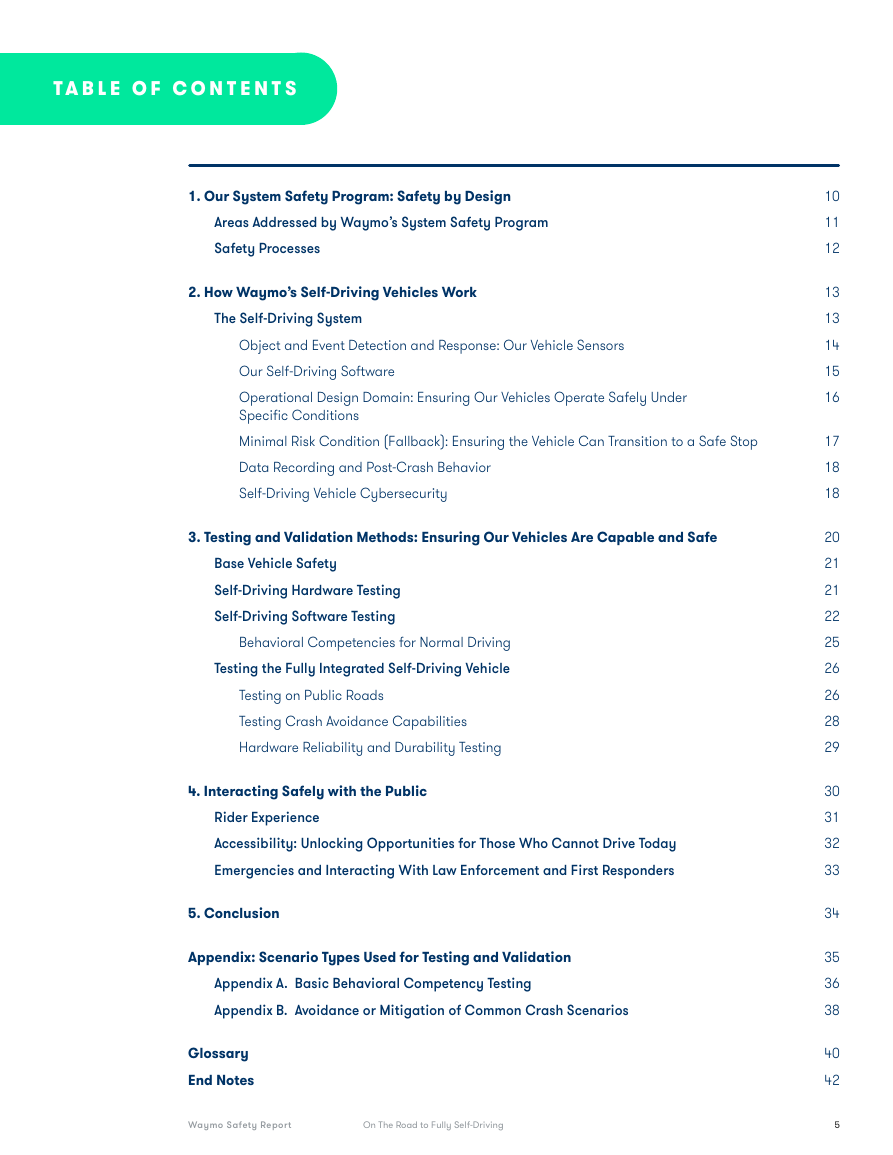
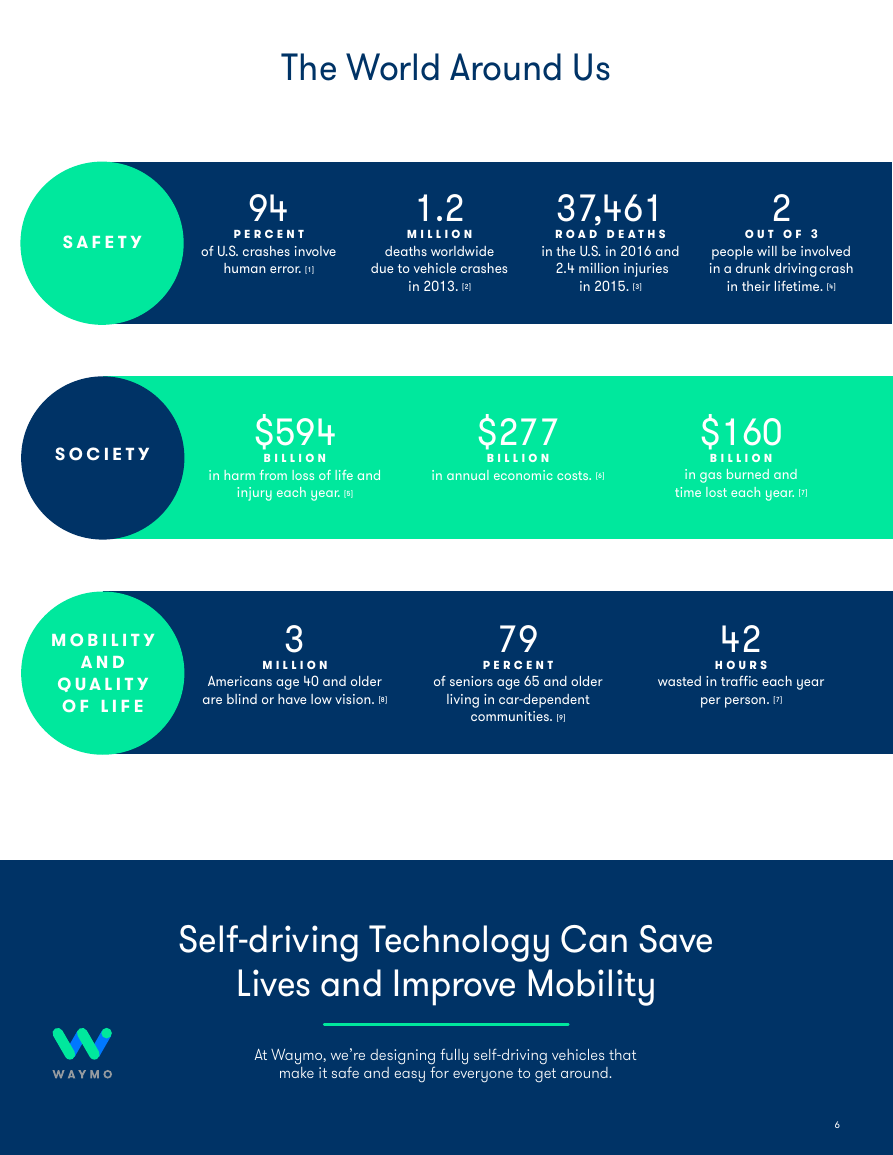

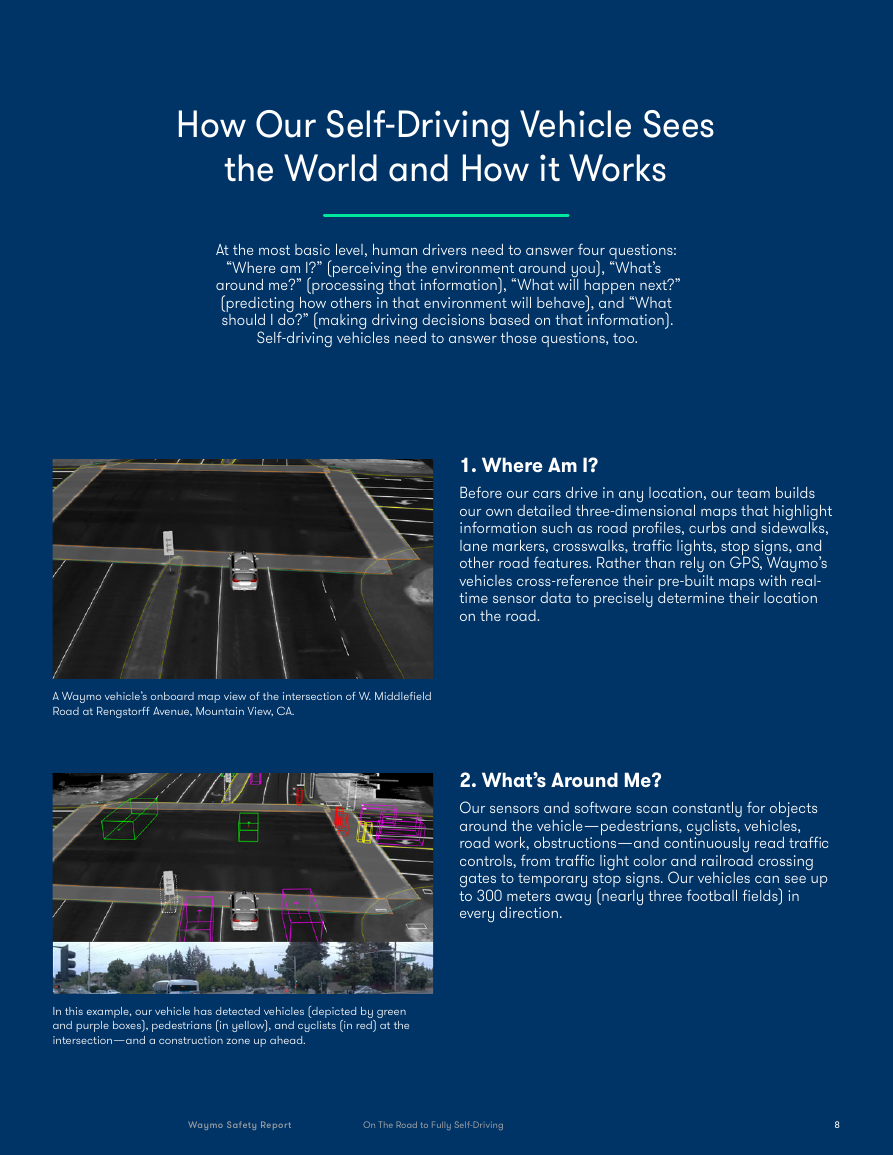








 2023年江西萍乡中考道德与法治真题及答案.doc
2023年江西萍乡中考道德与法治真题及答案.doc 2012年重庆南川中考生物真题及答案.doc
2012年重庆南川中考生物真题及答案.doc 2013年江西师范大学地理学综合及文艺理论基础考研真题.doc
2013年江西师范大学地理学综合及文艺理论基础考研真题.doc 2020年四川甘孜小升初语文真题及答案I卷.doc
2020年四川甘孜小升初语文真题及答案I卷.doc 2020年注册岩土工程师专业基础考试真题及答案.doc
2020年注册岩土工程师专业基础考试真题及答案.doc 2023-2024学年福建省厦门市九年级上学期数学月考试题及答案.doc
2023-2024学年福建省厦门市九年级上学期数学月考试题及答案.doc 2021-2022学年辽宁省沈阳市大东区九年级上学期语文期末试题及答案.doc
2021-2022学年辽宁省沈阳市大东区九年级上学期语文期末试题及答案.doc 2022-2023学年北京东城区初三第一学期物理期末试卷及答案.doc
2022-2023学年北京东城区初三第一学期物理期末试卷及答案.doc 2018上半年江西教师资格初中地理学科知识与教学能力真题及答案.doc
2018上半年江西教师资格初中地理学科知识与教学能力真题及答案.doc 2012年河北国家公务员申论考试真题及答案-省级.doc
2012年河北国家公务员申论考试真题及答案-省级.doc 2020-2021学年江苏省扬州市江都区邵樊片九年级上学期数学第一次质量检测试题及答案.doc
2020-2021学年江苏省扬州市江都区邵樊片九年级上学期数学第一次质量检测试题及答案.doc 2022下半年黑龙江教师资格证中学综合素质真题及答案.doc
2022下半年黑龙江教师资格证中学综合素质真题及答案.doc